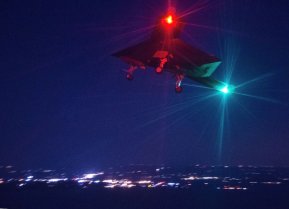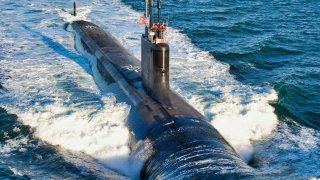Time to Reinvent the U.S. Navy's Submarine Force to Fight China
The age of undersea exceptionalism is drawing to a close in naval warfare. Get used to it, submariners, and get ready. That’s the glum but bracing message from Bryan Clark and Timothy Walton, two fellows over at the Hudson Institute. Their report “Fighting into the Bastions” is nothing less than a call for a revolution in subsurface operations. It’s a message that U.S. Navy officialdom and its political masters must heed.
Quite the opposite. Ample historical precedent suggests that a paradigm shift in the submarine force will be painful, its prospects uncertain. It may also take a real-world shock of some sort to discredit the old paradigm and set necessary change in motion. During the interwar decades U.S. submariners were trained to attack hostile battle fleets, so skippers learned habits needed to go up against ships of war. As a result many of them floundered when ordered to attack Japanese merchantmen during World War II. They couldn’t cast off ingrained habits. Accordingly, SUBPAC, the submarine directorate at Pearl Harbor, enacted stern measures to rid the fleet of outdated ways of fighting beneath the waves. They allotted each skipper two patrols to produce results against Japan. A captain who failed to produce lost his command.
Many did fail.
Though harsh, SUBPAC’s personnel policies worked. New officers free of interwar doctrine ultimately helped the Pacific Fleet get its tactics, techniques, and procedures for submarine warfare right. But World War II also demonstrates that cultural turnover takes time, even amid the press of war. And it takes resolve and a measure of ruthlessness among senior leadership.
In short, the project Clark and Walton have put before the U.S. Navy is to institute revolutionary change without the stimulus of war—without a shock to the system of Pearl Harbor magnitude that proves the old paradigm no longer suffices and that compels an institution to amend its ways. This project means starting to train and educate youthful officers and enlisted folk in fresh ways now, acculturating them to methods more reminiscent of air warfare than the silent service’s past. As today’s youth ascend the ranks, they will bring the new culture with them. It will come to be the accepted paradigm. Submariners should reach out to Navy and Air Force aviators for insight into how to artfully blend stealth with active measures for tactical and operational effect. Maybe crossover training between submarine courses and flight school would help.
But again, revolutions need leadership. Winning over senior uniformed and civilian leaders will be a pivotal ingredient in remaking the submarine force for a post-silent-service age. If the politics of undersea-warfare transformation falters, so will the paradigm shift.
Sounds like a topic for Clark and Walton’s next report.
About the Author: Dr. James Holmes
Dr. James Holmes is J. C. Wylie Chair of Maritime Strategy at the Naval War College and a Nonresident Fellow at the University of Georgia School of Public and International Affairs. The views voiced here are his alone.


